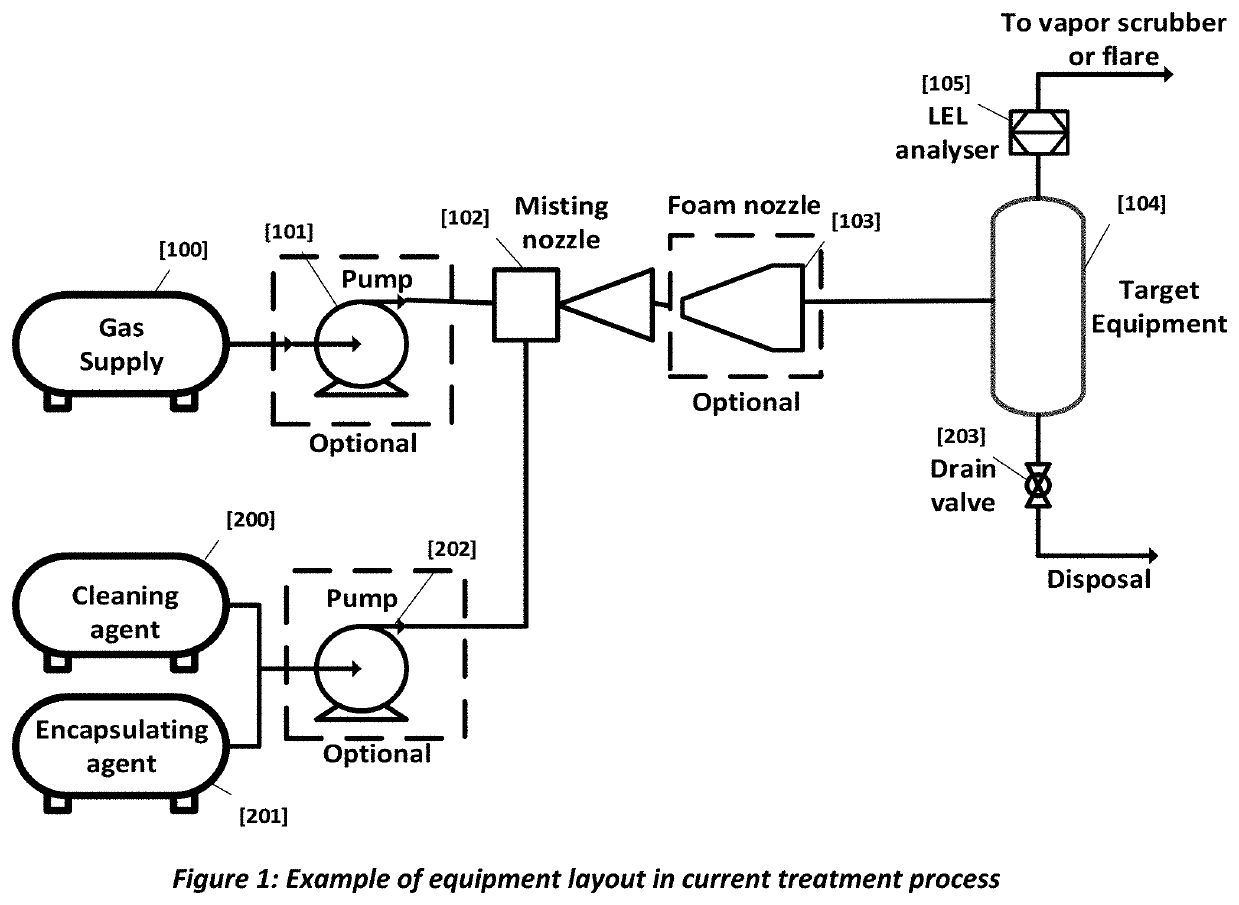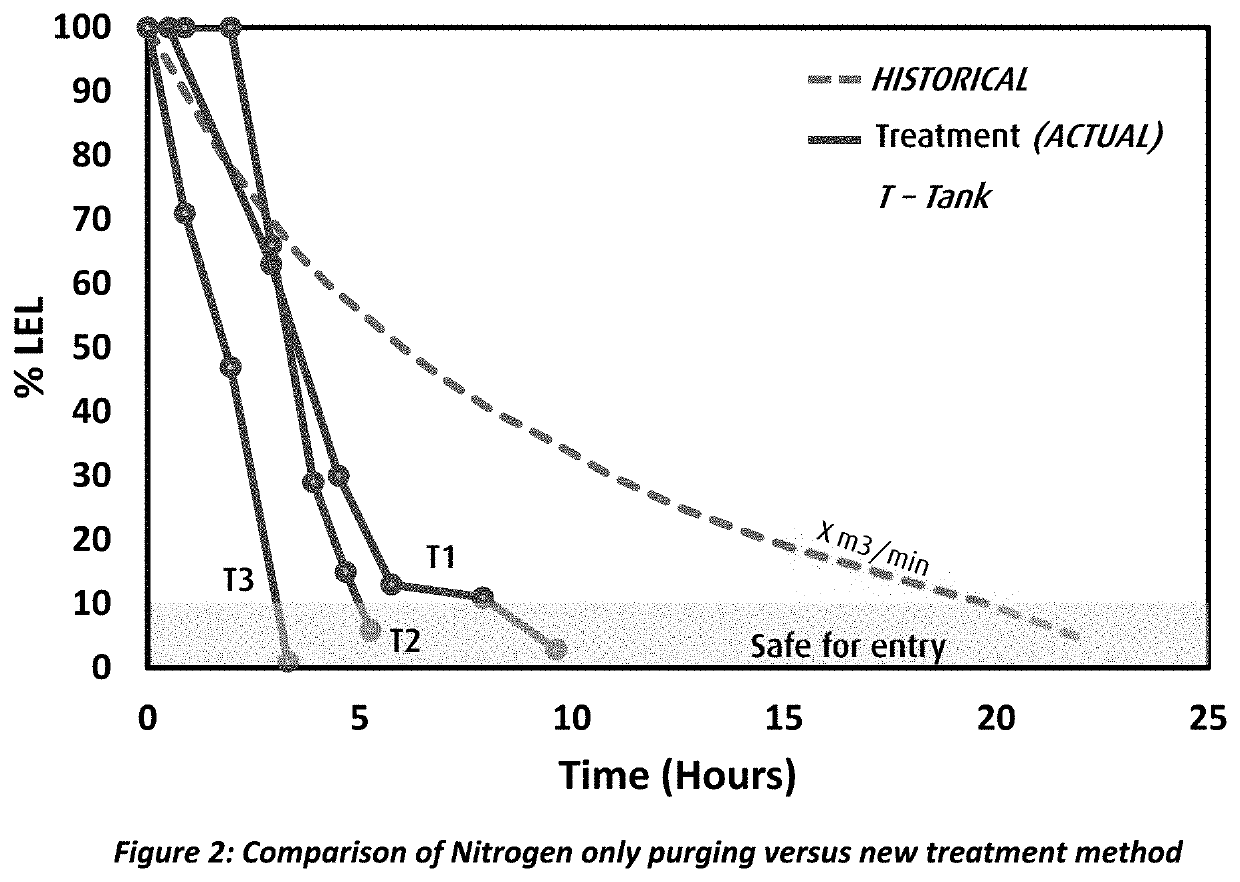Method to remove explosive and toxic gases and clean metal surfaces in hydrocarbon equipment
- Summary
- Abstract
- Description
- Claims
- Application Information
AI Technical Summary
Benefits of technology
Problems solved by technology
Method used
Image
Examples
example 4
[0047]Metal coupons were coated with 1 gram of Canadian bitumen and a comparative analyses of solvency strength was tested by spraying 10 ml of highly aromatic and natural solvents. Solvency strength was analyzed by quantification of the residues dislodged and from the coupon as a percentage of the total initial weight. Results are tabulated in Table 2. Additional tests were conducted to quantify the influence of elevated temperature Table 3, clearly indicating increased solubility of the organic residue at higher temperature. Although there were 14 solvents tested, any C5-C45 hydrocarbon may be used as the cleaning agent.
TABLE 2Solubilization of Bitumen using organic solvents% Bit. RemovedNo.Chemical(ambient)1Friction reducing agent2Heavy reformate39.53Toluene / Xylene mix414Reformed Naphtha385Xylene736Toluene527Gas oil8Distillates (I)26.49Distillates (II)10Heavy aromatic5naphtha11Terpene6012Turpentine1313Paint Thinner26.114Methyl Ester−10.6
TABLE 3Effect of Temperature on solubility ...
PUM
 Login to View More
Login to View More Abstract
Description
Claims
Application Information
 Login to View More
Login to View More - R&D Engineer
- R&D Manager
- IP Professional
- Industry Leading Data Capabilities
- Powerful AI technology
- Patent DNA Extraction
Browse by: Latest US Patents, China's latest patents, Technical Efficacy Thesaurus, Application Domain, Technology Topic, Popular Technical Reports.
© 2024 PatSnap. All rights reserved.Legal|Privacy policy|Modern Slavery Act Transparency Statement|Sitemap|About US| Contact US: help@patsnap.com









